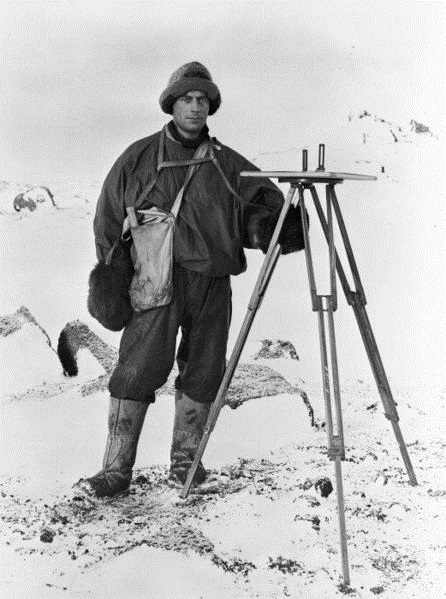Online gem No.7: Antarctica frozen in Canberra street names (26 February 2016)
Suburbs and streets in the Australian Capital Territory acknowledge and commemorate the role of individuals or reflect the diverse nature of Australian culture. Mawson as a suburb is named in honour of Sir Douglas Mawson (1882-1958), the distinguished Antarctic explorer, geologist and academic. The names of streets in Mawson follow an Antarctic theme.
Some Mawson names are familiar, such as Shackleton Circuit (after Briton Sir Ernest Shackleton) or Hurley Street (after the photographer Frank Hurley, who also photographed the Great War). But other names in the suburb commemorate lesser-known individuals, such as members of Antarctic exploration teams who lost their lives through misadventure. Hoseason Street, Jelbart Street and Scoble Place are all named in memory of young men who drowned in accidents in the Antarctic region in the late 1940s or early 1950s.
Richard James Hoseason, a radio operator, was drowned when he and a companion were swept off a beach by a wave at Heard Island on 26 May 1952. Many years later, a veteran of Antarctic exploration (another former radio operator) was motivated to place a small memorial plaque on the nature strip near the corner of Hoseason Street in Mawson.
On 24 February 1951, John Ellis Jelbart, an Australian member of the Norwegian-British-Swedish Antarctic expedition, and two other members of the expedition were drowned near Maudheim Station, Antarctica. Jelbart, a physicist, was a recent M. Sc. graduate of the University of Melbourne. His academic achievements and Antarctic explorations were noted in an obituary published in Polar Record (v. 6, 1953), the journal of the Scott Polar Research Institute, University of Cambridge.
Finally, Charles Henry Scoble (1916-48), an engineer, was accidentally drowned at Macquarie Island in July 1948. The names of Hoseason and Scoble are included on a memorial plaque at St Paul’s Anglican Cathedral, Melbourne, that commemorates expeditioners of the Australian National Antarctic Research Expeditions (ANARE) who have lost their lives.
In one notable instance, however, misadventure in Antarctica probably saved the life of a young Australian, Frank Debenham (1883-1965). Debenham, a scientist and geographer, had been invited to join Robert Falcon Scott’s British Antarctic expedition of 1910-13. Scott selected Debenham to be a member of the party scheduled to make the ill-fated trip to the South Pole, but Debenham injured his knee in a game of football in the snow and was prevented from making the trip. After military service in World War I, Debenham had a distinguished academic career as founding director of the Scott Polar Research Institute and foundation professor of geography at Cambridge. Debenham Street in Mawson is named in his honour.
This is one of a series contributed by John Myrtle (myrtle@webone.com.au) from his database of material relating to 1900 to the early 1970s.
 Frank Debenham, Terra Nova Expedition 1911 (Wikimedia Commons/National Library of New Zealand)
Frank Debenham, Terra Nova Expedition 1911 (Wikimedia Commons/National Library of New Zealand)

